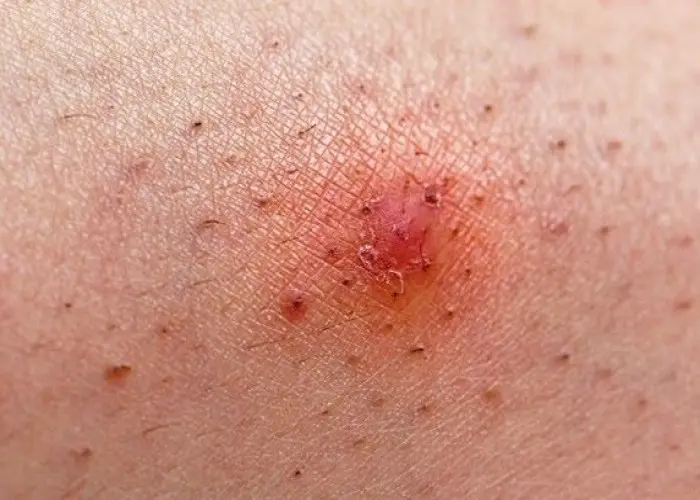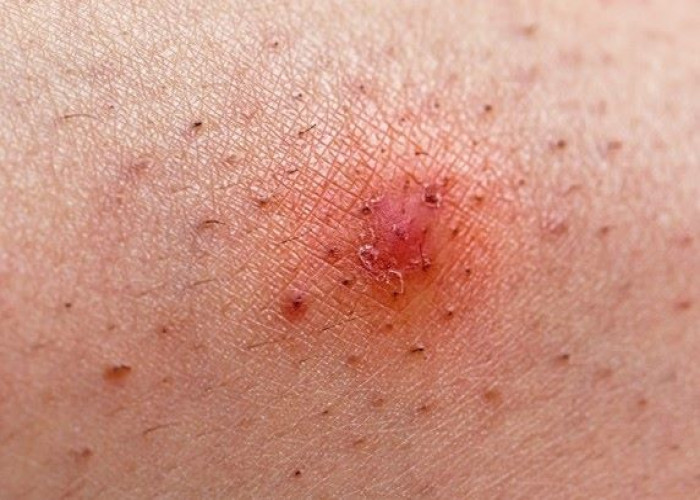 Welcome
Welcome
“May all be happy, may all be healed, may all be at peace and may no one ever suffer."
Ingrown hair

Ingrown hair is a condition that occurs when a hair curls back or grows sideways into the skin instead of growing out of the hair follicle. It can affect any part of the body where hair grows, but is most commonly seen in areas that are frequently shaved or waxed, such as the face, neck, armpits, legs, and pubic area.
Ingrown hairs can cause irritation, redness, itching, and pain, and can sometimes lead to infection or the formation of small, pus-filled bumps called papules or pustules. In people with curly or coarse hair, ingrown hairs may be more common due to the tendency of the hair to grow back into the skin.
Prevention of ingrown hairs can be achieved by avoiding shaving too closely or too frequently, using a sharp razor and shaving cream or gel, and using a gentle exfoliating scrub or washcloth to remove dead skin cells and prevent hair from becoming trapped under the skin. Waxing, tweezing, and depilatory creams can also cause ingrown hairs and should be used with caution.
Treatment for ingrown hairs typically involves gently washing the affected area with warm water and soap, applying a warm compress to the area to reduce inflammation, and using a sterile needle or tweezers to carefully lift the hair out of the skin. Topical treatments such as hydrocortisone cream or antibiotic ointment may also be used to reduce inflammation and prevent infection.
Severe or recurrent cases of ingrown hairs may require medical treatment, such as prescription-strength topical creams or oral antibiotics to treat infection or inflammation, or laser hair removal to permanently remove the hair and prevent future ingrown hairs.
Research Papers
Disease Signs and Symptoms
- Skin bumps
- Skin darkening (hyperpigmentation)
- Itching
- Small, pus-filled, blister-like lesions (pustules)
Disease Causes
Ingrown hair
Hair structure and direction of growth play a role in ingrown hairs. A curved hair follicle, which produces tightly curled hair, is believed to encourage the hair to re-enter the skin once the hair is cut and starts to grow back. Shaving creates sharp edges in this type of hair, especially if the hair is dry when shaved.
You might also get an ingrown hair if you:
- Pull your skin taut during shaving — which allows the cut hair to draw back into the skin and re-enter the skin without first growing out
- Tweeze — which also can leave a hair fragment under the skin surface
When a hair penetrates your skin, your skin reacts as it would to a foreign body — it becomes inflamed.
Disease Prevents
Ingrown hair
To help prevent ingrown hairs, avoid shaving, tweezing and waxing. If that's not an option, use these tips to make ingrown hairs less likely:
- Wash your skin with warm water and a mild facial cleanser before shaving.
- Apply lubricating shaving cream or gel a few minutes before shaving to soften the hair. Or apply a warm compress.
- Use a sharp razor every time you shave. Further study is needed to determine whether a single- or multiple-blade razor is best for preventing ingrown hair. See what works best for you.
- Avoid close shaves.
- Don't pull your skin taut while shaving.
- Shave in the direction of hair growth.
- Rinse the blade after each stroke.
- Rinse your skin and apply lotion after you shave.
The following hair removal methods also may help prevent ingrown hairs:
- Electric razor or clipper. With the razor, avoid the closest shave setting and hold the razor or clipper slightly away from your skin.
- Chemical hair remover. The chemicals in hair-removing products (depilatories) may irritate your skin, so test on a small area first.
- A cream to decrease hair growth. A product called eflornithine (Vaniqa) is a prescription cream that decreases hair regrowth when combined with another hair removal method, such as laser therapy. Further study is needed to prove the usefulness of this method.
Disease Treatments
To treat ingrown hairs, stop shaving, tweezing or waxing until the condition improves — usually one to six months. If that's not possible, consider laser treatment, which removes the hair at a deeper level and inhibits regrowth. Laser treatment may cause blisters, scars and skin darkening.
Medications
Your doctor may prescribe certain medications to help manage your condition. They include:
- Drugs that help remove dead skin cells. Retinoids applied to your skin, such as tretinoin (Renova, Retin-A, others), help with clearing dead cells from your skin (exfoliation).
- Creams to reduce inflammation. Your doctor may suggest a steroid cream.
- Creams or pills to control infection. For mild infections caused by scratching the affected area, your doctor may recommend an antibiotic ointment. For more severe infection, your doctor may prescribe oral antibiotics.
Disease Diagnoses
Disease Allopathic Generics
Disease Ayurvedic Generics
Disease Homeopathic Generics
Disease yoga
Ingrown hair and Learn More about Diseases

Dilatation of Stomach

MCAD deficiency

Chronic pelvic pain in women

Chronic traumatic encephalopathy

Sarcoidosis

Childhood asthma

Suspicious breast lumps

Hypoplastic left heart syndrome
ingrown hair, অন্তর্বর্ধিত চুল
To be happy, beautiful, healthy, wealthy, hale and long-lived stay with DM3S.
